Dan Pennington has engineered a means by which a standard wood lathe can accommodate two cross slides. His method requires no welding and very little metal work. He is getting excellent results from this method. It is cost effective and easy to implement. Dan used the cross slide and toolhoder concepts illustrated in my instructional DVD.
Dan supplied the pictures and commentary.
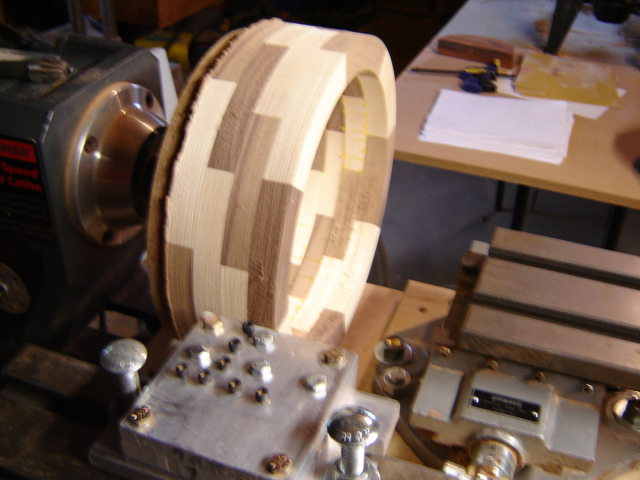 |
The lathe in action with a maple and walnut rim being turned.
NOTE: Dan uses Cole brand jumbo jaws which work with the Nova brand expanding jaw chuck. I have been using OneWay products which look very similar. Click here for a list of suppliers.
|
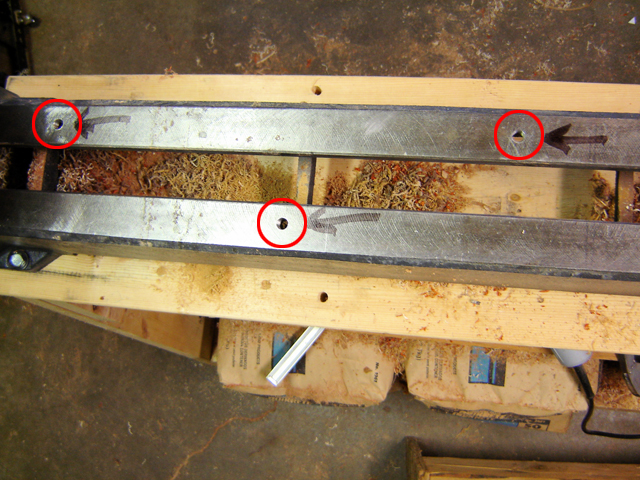 |
This one shows the ways with the three bolt holes for the table. I positioned the wood table with the cross slide tables in place with clamps till I got everything spaced for good functioning then drilled the holes.
|
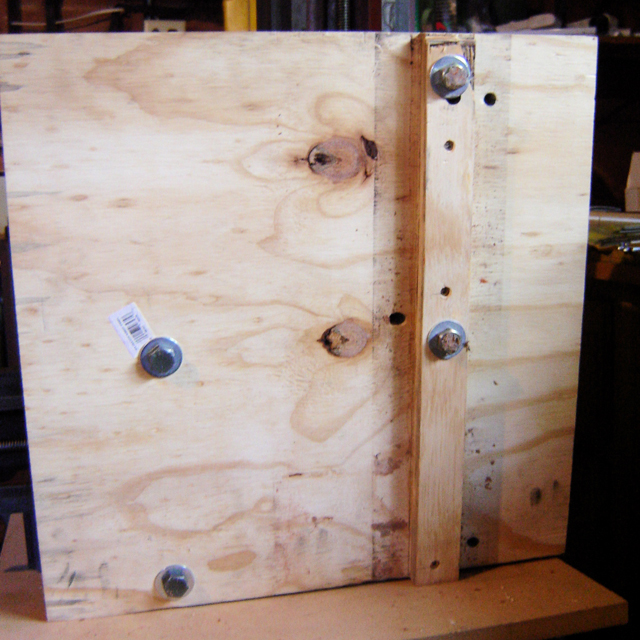 |
This is the underside of the plywood table. The plywood strip fits snuggly between the lathe ways and acts to line everything up automatically. Saves me from having to re-calibrate everything every time I re-install the table on the lathe. The strip sets the directional orientation to the lathe and the bolt holes on the ways sets the distance from the head.
The two bolts on the right are for the inside cross slide table and the two on the left are for the outside table. I'm thinking of changing the wood strip to a couple pieces of angle iron because the wood binds up between the ways and gets hard to move to line up the way bolt holes.
|
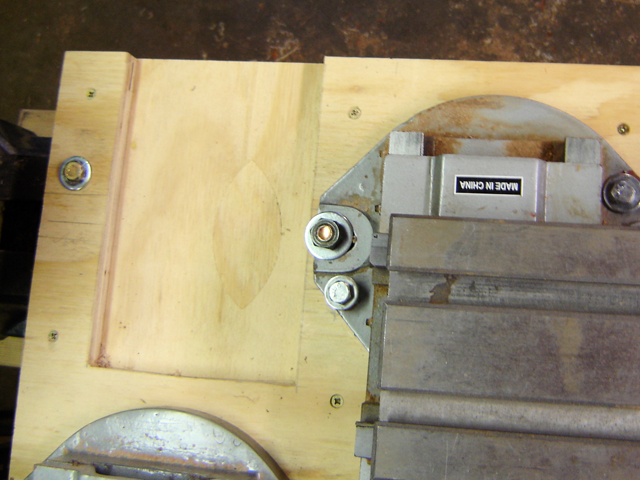 |
A shot from above to show the layout of the components. Basically the same layout as shown in Mark's instructional DVD, except I use two thicknesses of 3/4 inch plywood to make my table instead of metal tubing. The layers are glued and screwed together. Very stiff. The cutout in the plywood table is for clearance when I'm cutting a 12 inch rim, which is about 13 to 13 1/2 in the rough.
NOTE: Dan is using the Phase II cross slide from Enco. Click here for a list of suppliers.
|
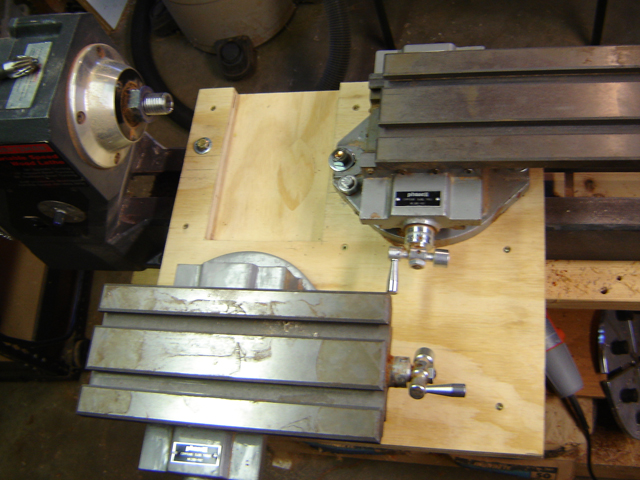 |
The two cross slide tables are bolted through the wood. You can see one of those bolts in the center of the photo. There needs to be some slop in the bolt holes holding the cross slide tables to the wood table so that they can be wiggled into alignment with the center line of the lathe.
The lower bolt in the center is one of the three bolts holding the table to the lathe ways. I drilled and tapped the bolt holes in the ways. It's relatively easy to cut threads in cast iron.
|
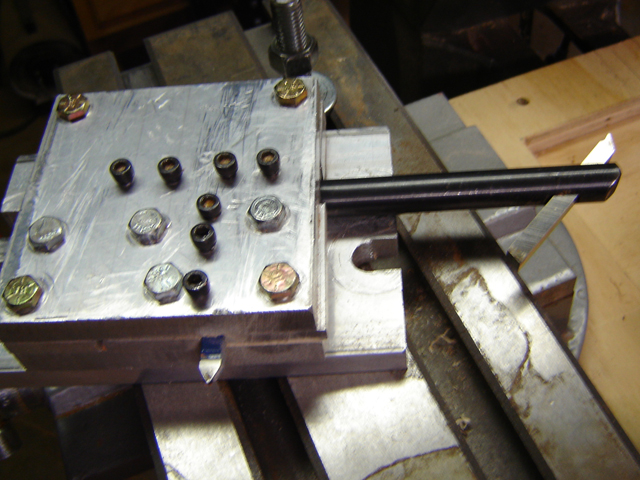 |
Tool block with both inside and outside cutting tools installed. |
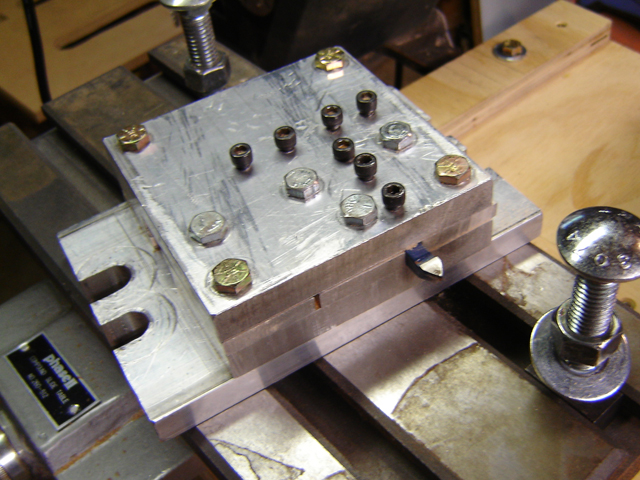 |
Tool holder block, pretty much like Mark's, I think. I bought some 1/2 and 1/4 inch aluminum plate for this. Cuts easily with a band saw, easy to drill and tap. I use 1/4 inch tools. Both pre-shaped carbide tipped and 1/4 inch sharpenable tool blanks. |
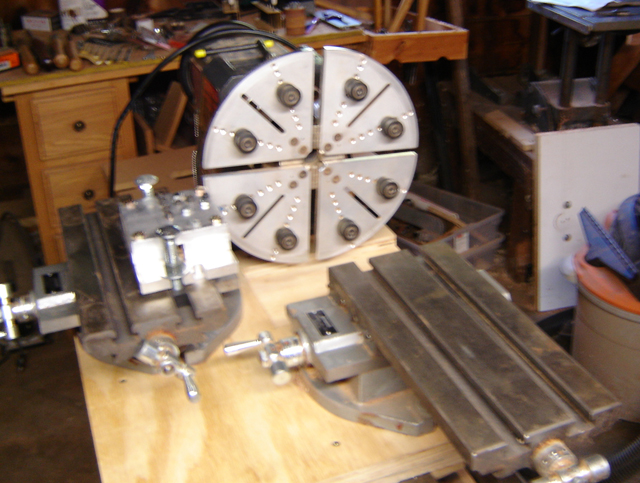 |
This is a set of Cole jumbo jaws for holding bowls or rims after they have been removed from the face plate so that I can cut the glued surface.
|
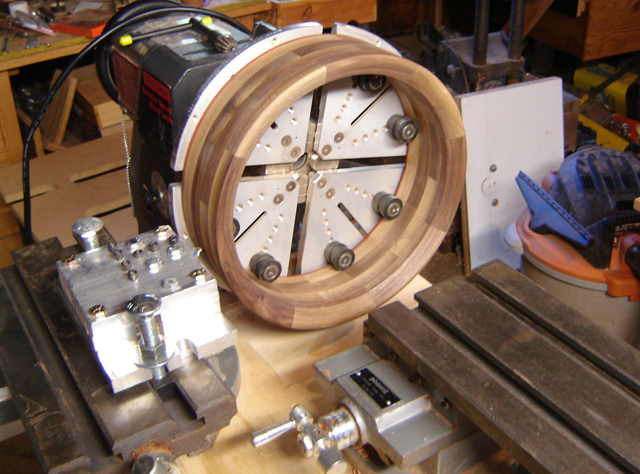 |
Cole jaws with a rim.
When I'm doing the final cleanup or smoothing cuts I use traditional hand-held lathe tools. To use the hand-held tools, I ubolt the cross slides and plywood base and use a tool rest. One of my favorite tools for this operation is an Elsworth grind bowl gouge freshly sharpened. It makes cuts smooth, cleancuts that requres very little sanding. By contrast, the cross slide tables give me faster rough cutting and an even, level surface.
|
|








